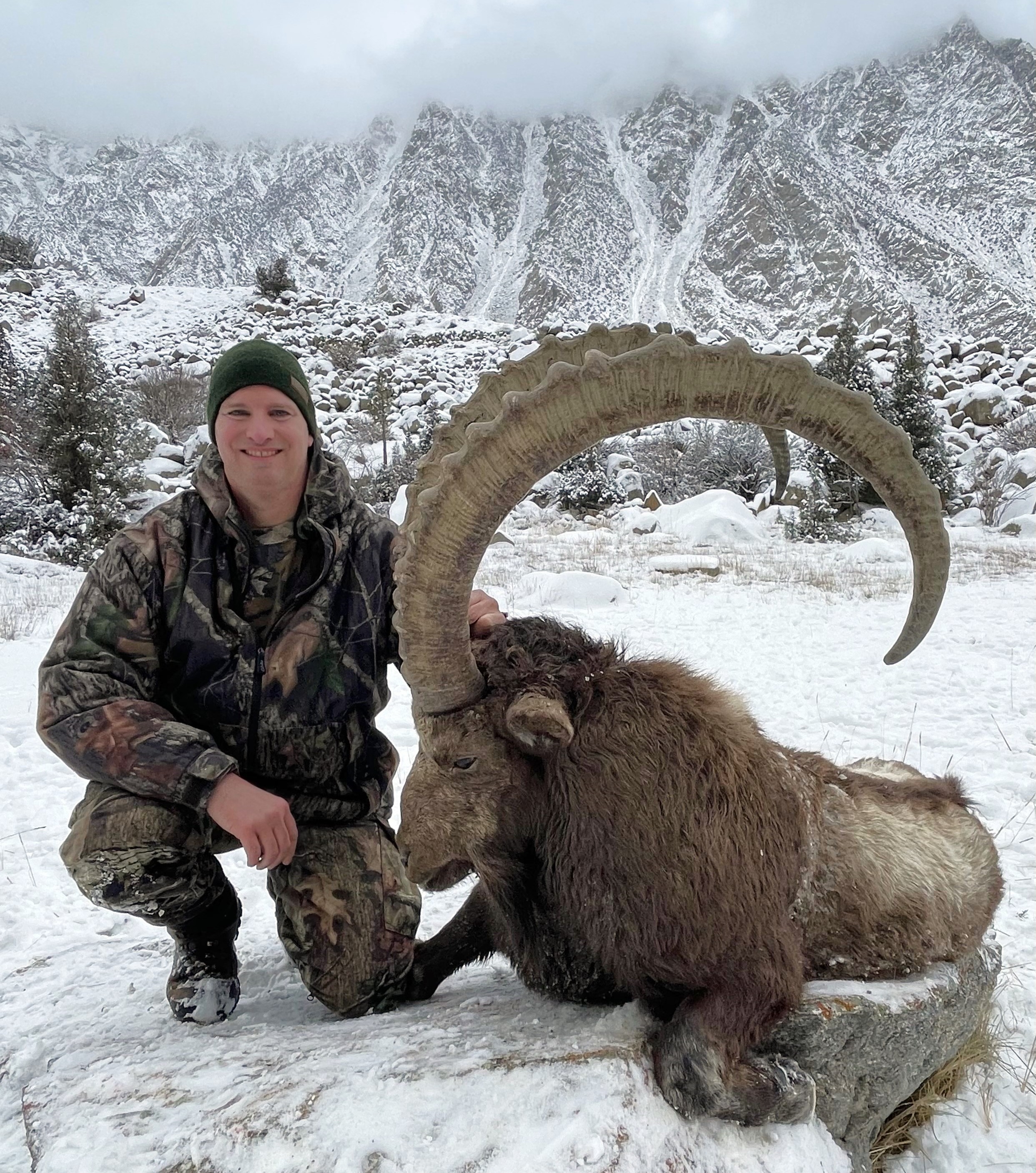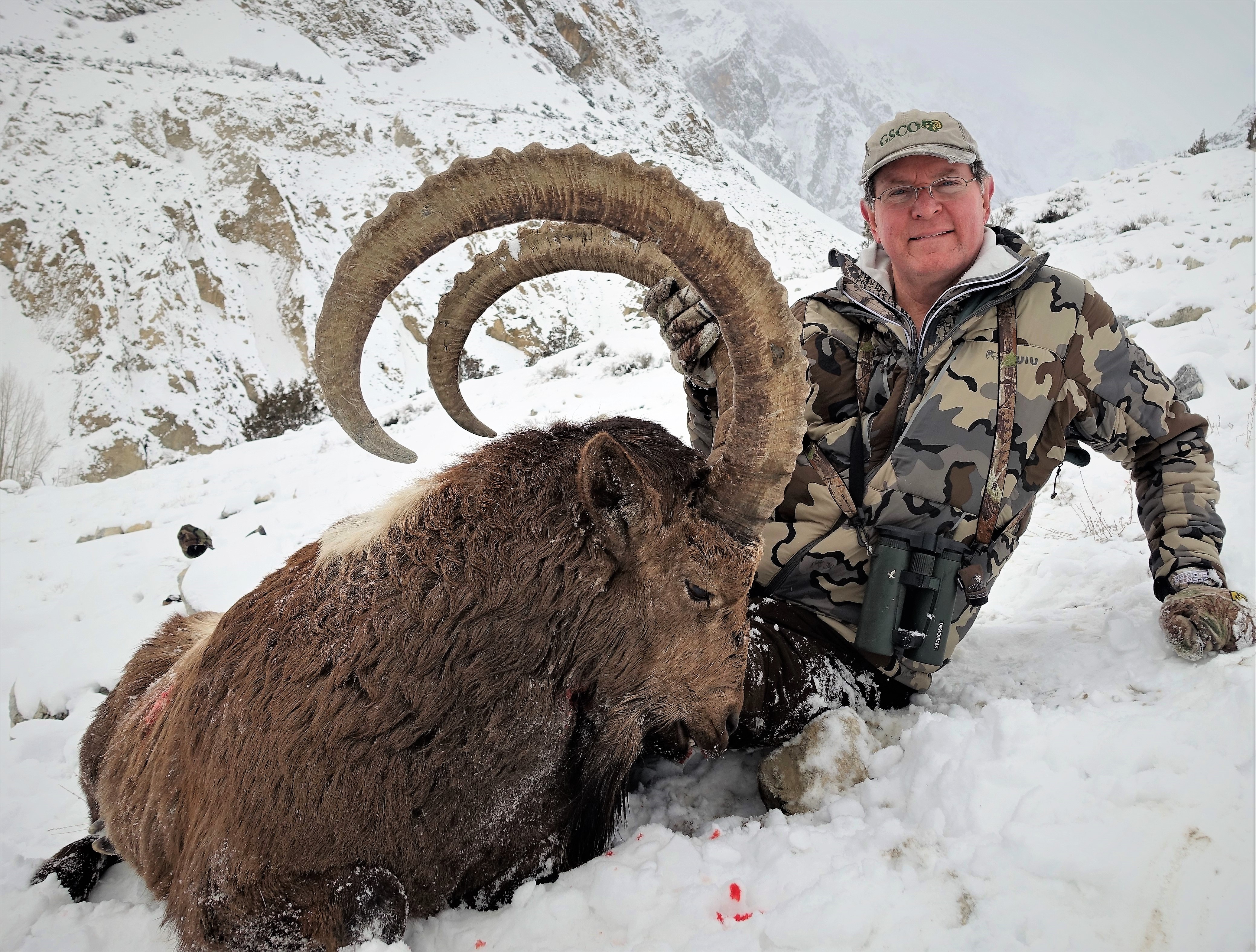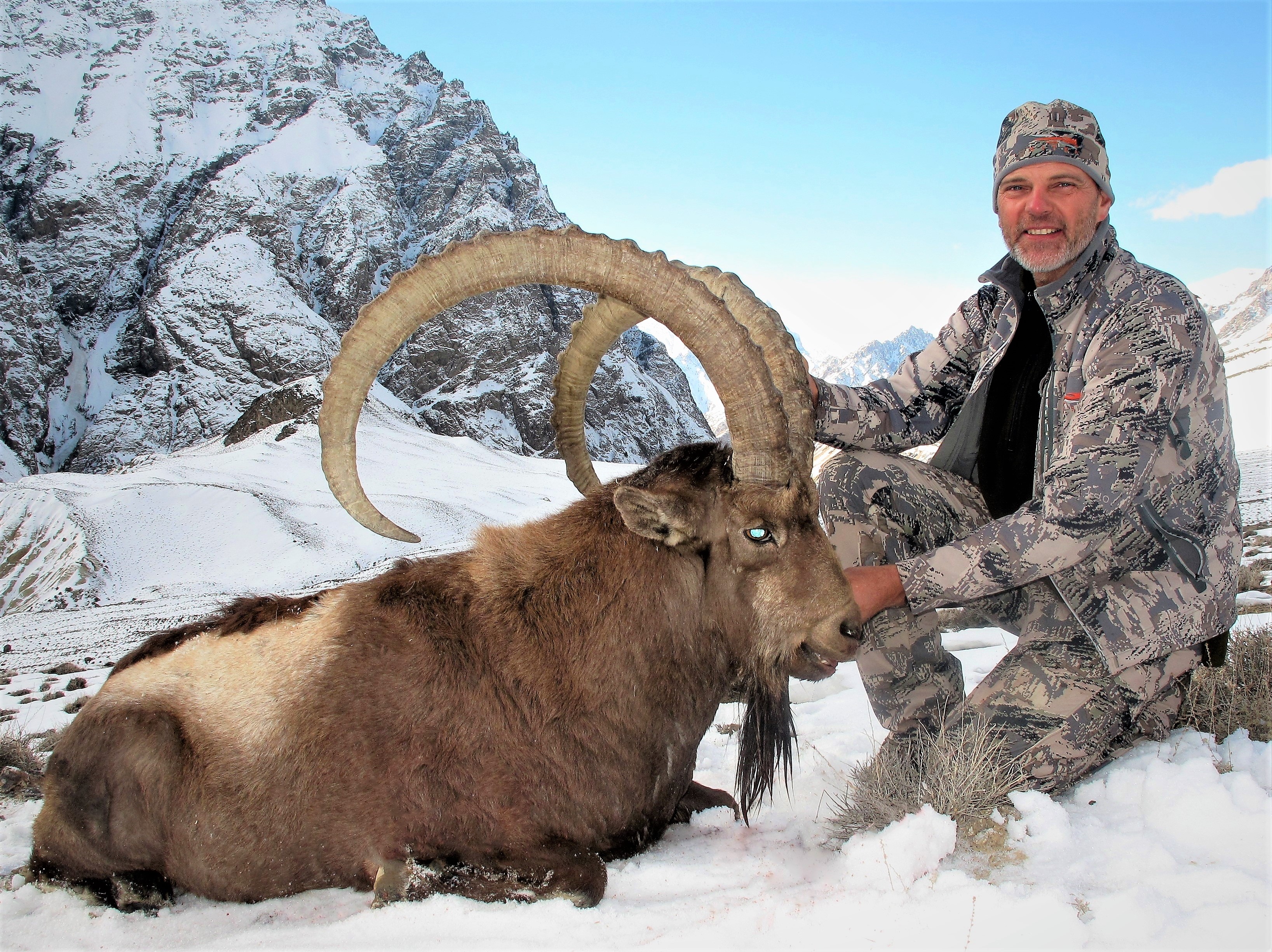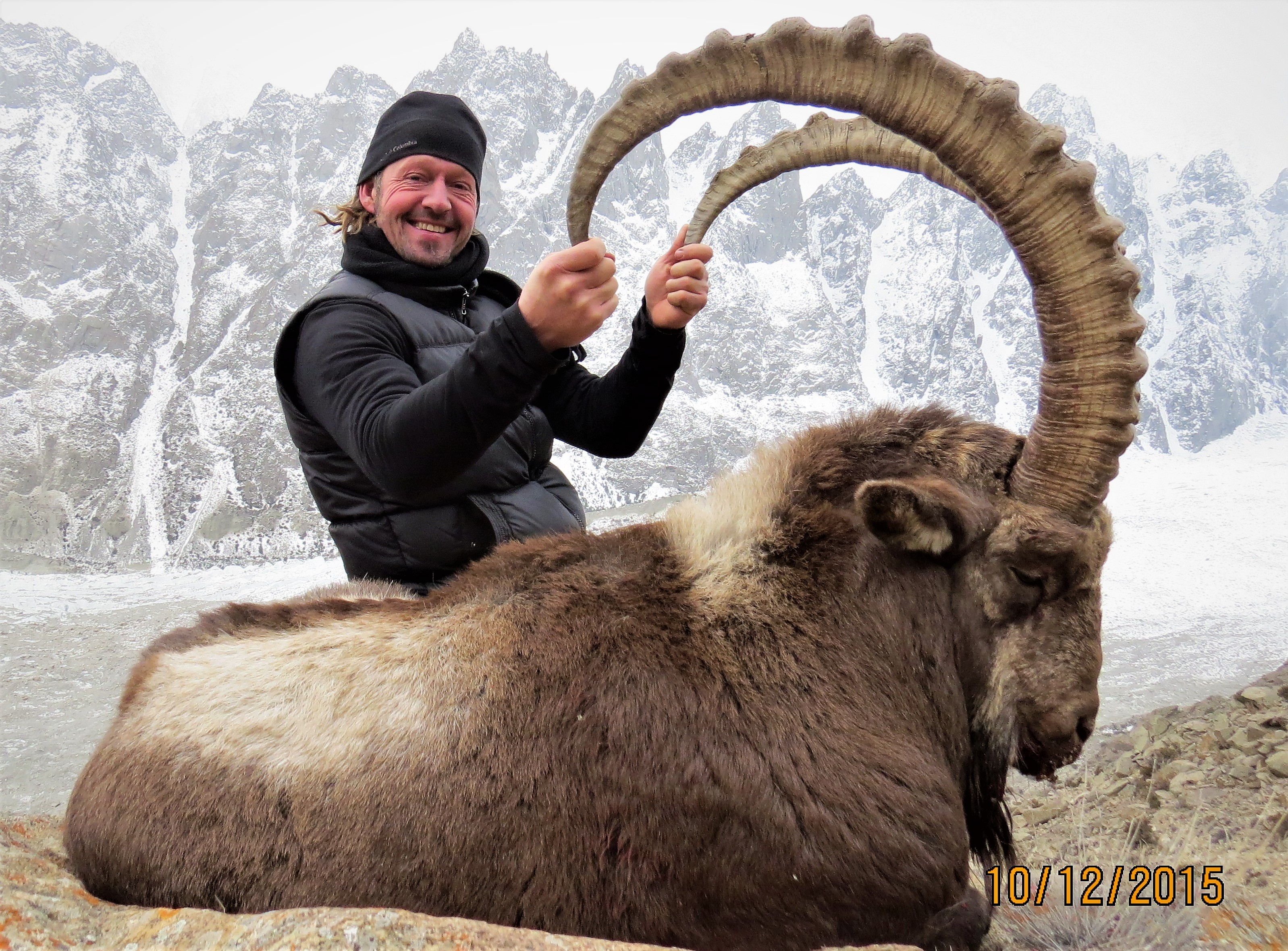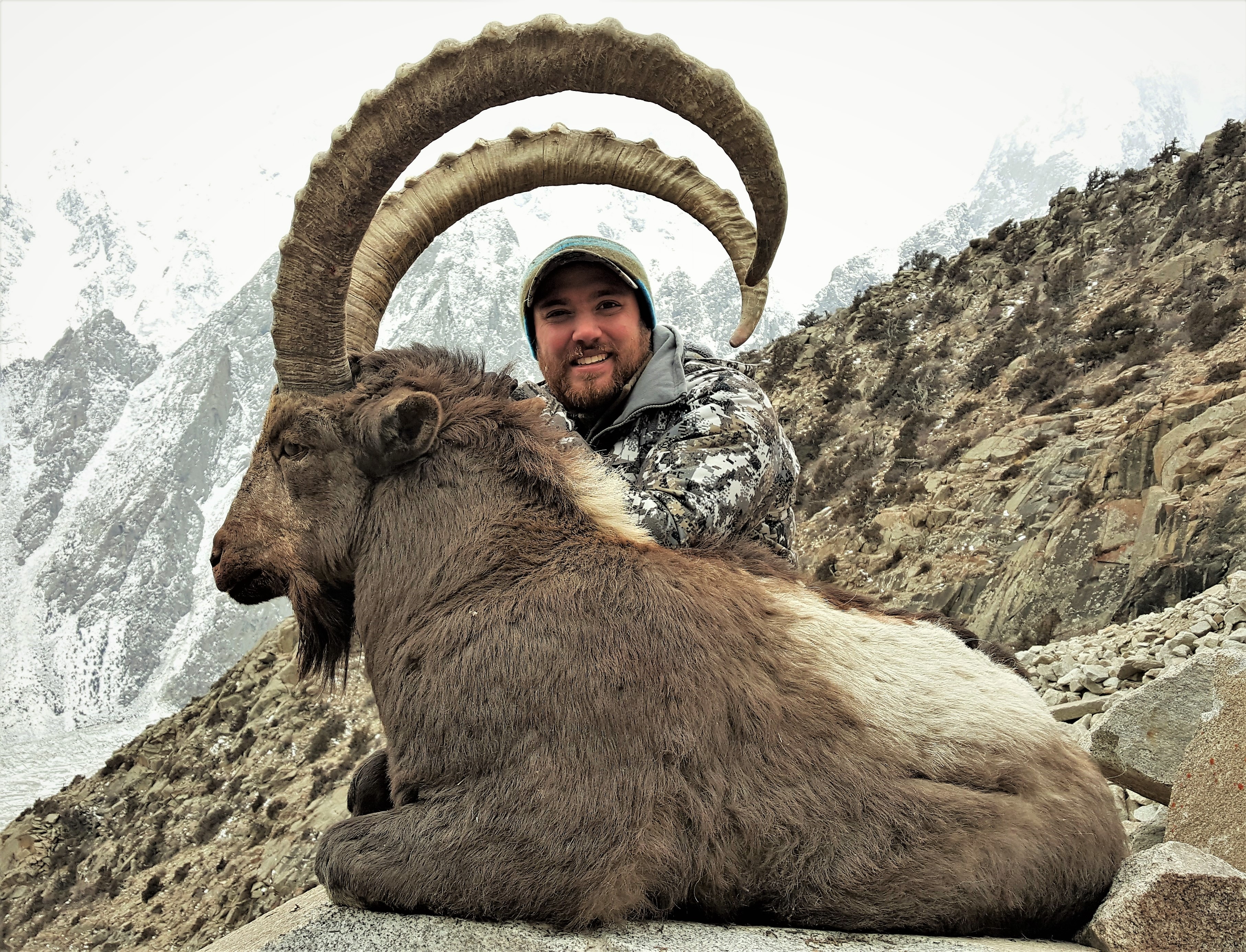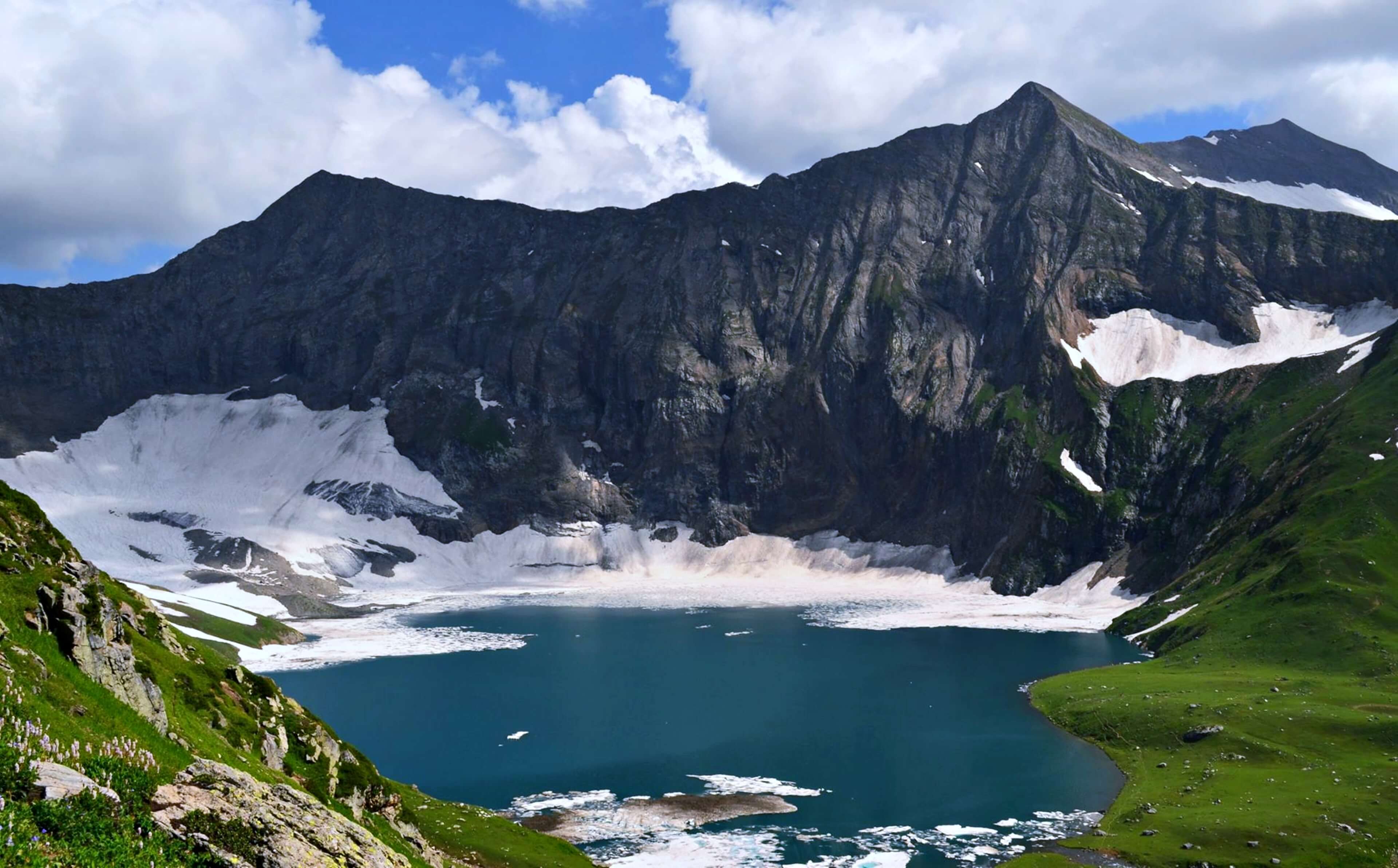SEASON: Hunting season for Himalayan ibex starts by September and runs through mid April. As a general rule, we do not start hunting Himalayan ibex any earlier than mid November as the animals will be high due to high temperatures. December seems to be the best time as it is the rutting time. Hunters may have a better chance on bigger males during this period. Prolonged winter and deeep snow in March and April can drive the ibex down to lower elevations. Hunters can have a good chance for an easy hunt.
AREA: Majority of our hunts for Himalayan ibex take place around the town of Gilgit which is only about an hour flight from Islamabad. Hunts can be carried out only in a number of community managed areas that are designated by the government and most of them are scattered around Gilgit. These are mostly towards north of town, on the way to China border. However we may carry out a few hunts in the season in Skardu region as well only if local guides send a good report for big ibex.
HOW TO GET THERE: Hunters are required to fly into capitol city Islamabad where they will be met by our Caprinae people. Next step is to take a domestic flight to Gilgit which is only an hour away. But flights may not be operational all the time during the winter months. Then hunters may have to take a 9 hour drive to Gilgit. This used to be a 14 hour drive but thanks to new road and better conditions the duration of the ride was reduced to 9 hours. It is a long, tiring ride but is also once in a lifetime experince fort he adventurous soul. They will find a lot of cultural things to see along the way besides some breathtaking scenery.
The auctual hunting areas can take anywhere between 30 minutes to 2 hours from Gilgit.
ACCOMMODATION: Hunters are accommodated in simple, village guest houses where everything stripped down to basics. At times, a shepherd hut or something similar can be used as a fly camp.
WEATHER: The average amount of time that the sky is clear or sunny (partly cloudy or less) in Gilgit during November is 56% of the day. So it is usualy nice. Coldest time around Gilgit is January. A typical day ranges from a high of 26°F (-3°C) to a low of 3°F (-16°C). By mid March the temperatures can start rising. April is the wettest month but the conditions are usually much nicer like spring time.
ALTITUDE: Elevation for huntig areas vary between 9200 (2800m)- 11.800 (3600m) feet. But deep snow in later months snow pushes the the ibex down. Sometimes they even can be hunted from a roadside or with little climbing.
DURATION of the HUNT: A ten day itinerary is adequate time for a Himalayan ibex hunt although hunters usualy complete their hunts a few days earlier.
HUNTING METHOD: A regular hunting day usualy starts very early in the morning by the first light. Depending on the circumstances, sometimes even before. Most hunts starts by walking from the village where the hunting party stays. Rarely hunters may be driven to another part of the mountain to start climbing. General way of hunting is spot and stalk. Since this is a community manged hunting, the whole community would like to chip in. So locals usually are out there watching for ibex. Therefore they know the whereabouts of big ibex even before the hunter arrives to the area.

